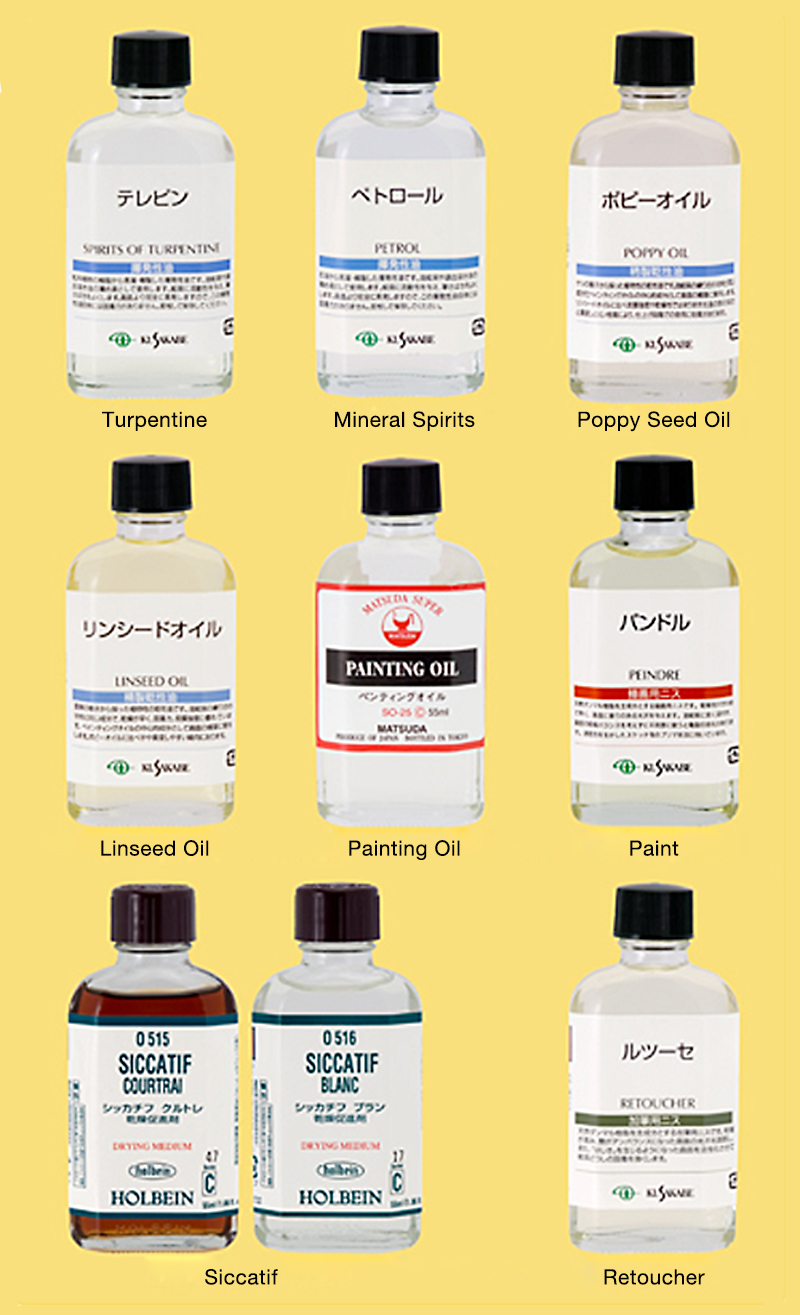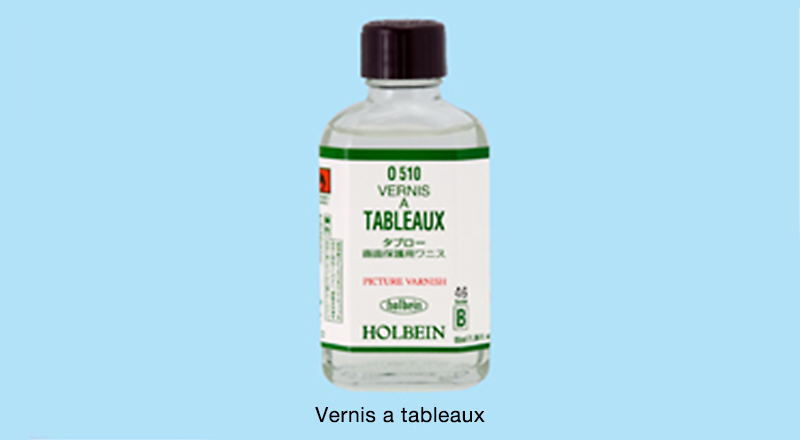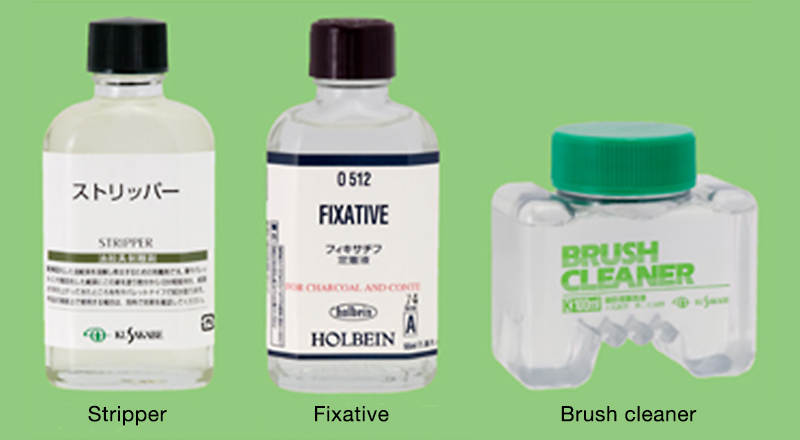Art Solutions
画溶液
Gayōeki
CATEGORIES
Art solutions (extracted oils) are supplementary paint solutions used when painting with oil-based paints. They are able to enhance the expressiveness of paints and to produce various effects.
There are a variety of solutions used for various purposes and to various effects, including “to increase paint’s consistency,” “to increase paint’s transparency,” “to adjust hue,” to adjust dying speed,” and to “protect a painting’s surface.”
At the most basic level, the process of oil painting can be divided into three stages: “sketching,” “painting,” and “finishing.” In each stage, different solutions play important roles. The solutions primarily used in the “sketching” stage are turpentine and mineral spirits. These volatile oils improve the stretchability of paints, increase drying speed, and, because they evaporate almost entirely after use, are suitable for use in detailed work on the placement and composition of large shapes and bright colors that have been painted on with a thin application of paint.
In the “painting” stage, drying oils such as linseed oil and poppy seed oil are used along with volatile oils, as is the mixed oil known as painting oil. These solutions adjust the thickness of the paints, improve their stretchability, increase the fixativity of the paints to the surface, and give oil paints their characteristic luster. In most cases these oils are used in mixtures with volatile oils, with the drying oil and combined oil content increasing as one approaching the finishing stage. In addition, painting varnish and siccatives that accelerate drying may be used as necessary.
In the “finishing” stage, varnishes such as picture varnish, which are used to protect the painting, are primarily used. These are applied roughly six months after the completion of the painting, when it has been allowed to dry, in order to protect it from deleterious gases and dust.
Some of the solutions not mentioned above include: brush cleaner, which is used to clean paint brushes; stripper, which is used to remove hardened paint; and fixative, which fixes materials that do not fix strongly, such as charcoal and conte crayon, to surfaces.
It is important to first learn the specific functions and methods of use of a solution before utilizing it.
- Art Solutions used in painting

- Art Solutions used after completion of painting

- Other art solutions

- The primary functions and types of art solutions

